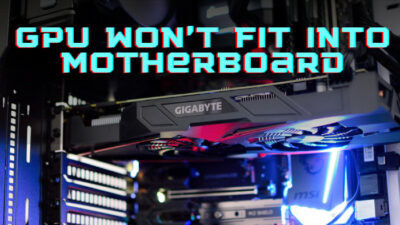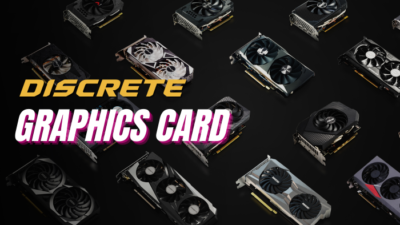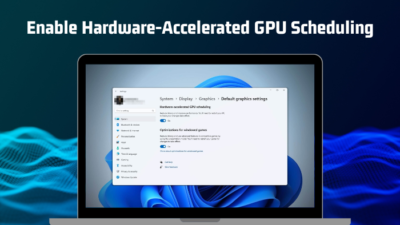When you get a new graphics card, it is very tranquil and makes you grin. It, however, vanishes the moment your machine won’t boot up after installing the GPU.
Isn’t it heartbreaking? But why is this happening?
I’ve encountered this problem numerous times over the years. And I’ve organized every potential resolution in this article. So let’s resolve this issue.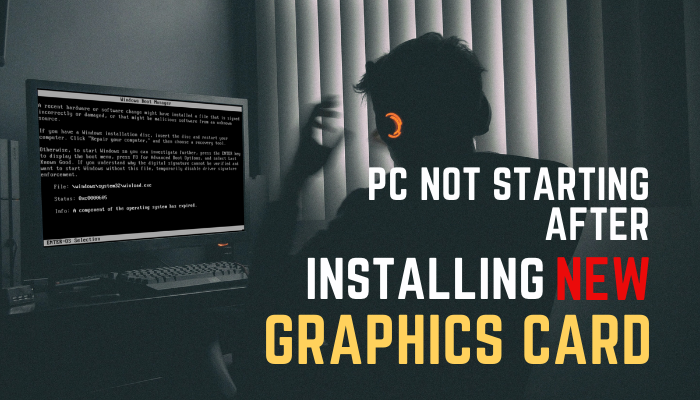
Why is the PC Not Booting After Installing a New GPU?
There could be several reasons why the computer does not boot after installing the new GPU. If you do not properly install the GPU in the PCIe slot, your power supply may be insufficient to power your new graphics card. These are some of the contributing factors to the problem.
Your PC was working properly before you installed the new graphics card, and your PC stopped booting or starting up. This problem can be caused by a variety of factors, the majority of which are hardware-related.
Here are the causes of the PC not starting after setting up a new graphics unit:
- The system is old and your motherboard is not compatible with the new graphics card.
- The power cables that connect the PSU and GPU are faulty, thus hampering the boot-up.
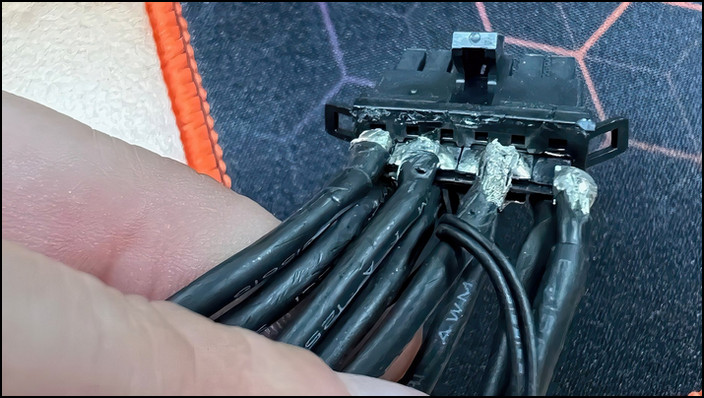
- The graphics card is not properly inserted into the PCIe slot. Also, if you have multiple PCIe slots you might inserter into the wrong lane.
- Your Power supply does not have enough voltage to run the new GPU.
- When you have an APU or integrated graphics processor then you need to change the BIOS settings for the new GPU to boot properly.
These are some of the possible reasons for the issue. And I’ll go over the solutions in the following section.
How to Fix Computer Not Starting After Installing New Graphics Card
The best way to connect a new GPU to your system is to first obtain graphics that are compatible with your system. Then properly insert it into the correct PCIe lane and connect the PSU cables. You will also require a suitable power supply for your new graphics. Finally, make sure the monitor and GPU are properly connected.
And almost always, a proper installation is possible when you check the steps I just said. However, even after checking every nook and cranny, we occasionally run into unexpected problems.
It was usual for me to become involved in these issues when I began working with hardware. Last year, one of my friends purchased a Biostar Gaming Radeon RX 550 4GB and sent it to me to install to his system.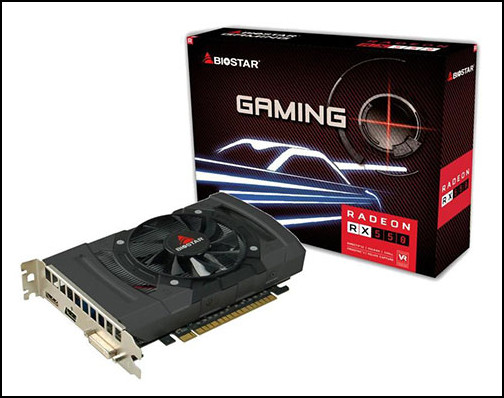
I tried several methods after experiencing the no-booting problem, but none of them worked. Then I discovered that the GPU is dead. But because it was still under warranty, my friend contacted the seller and had the GPU replaced.
If you encountered a startup problem after installing a new GPU, read on to find a solution.
Here are the methods to fix the PC won’t start after setup a new GPU:
Clean Dirty PCIe & Check for Damage
In case you’ve been using an air-cooled system for an extended period of time, the interior may have accumulated dust. This is quite normal. You must also thoroughly clean the PCIe slot.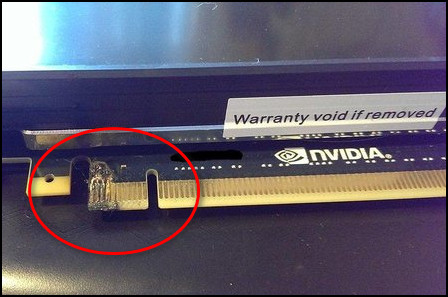
The GPU will be installed in the primary x16 slot. It’s similar to a RAM slot, but it’s slightly larger and placed differently.
Follow these steps to clean the PCIe slot:
- Turn off the system and disengage the wall power cable.
- Manage a compressed air can or blower and remove the dust of PCIe.
- Obtain a brush and isopropyl alcohol, drench the brush with the IPA, and clean the PCIe thoroughly.
- Wait for the PCIe to dry.
After the PCIe slot dries up, then install the Graphics unit. Also, I strongly advise you to use isopropyl or rubbing alcohol, anything else could damage your motherboard. Most of the time, your GPU will work properly after cleaning it.
That being said, when cleaning, keep an eye out for broken PCIe. If everything appears to be in order, the PCIe may not be faulty.
Insert the GPU Properly into the PCIe Slot
Another common rookie error is inserting the GPU in the incorrect slot or not inserting it all the way. Both of these can cause your computer to not boot.
Your motherboard may have multiple PCIe slots, but not all of them are for GPUs. Most GPUs require at least 8 PCIe lanes to function. However, not every PCIe has 8 lanes. The slots may appear identical, but the dedicated GPU slot is usually the first one closest to the CPU.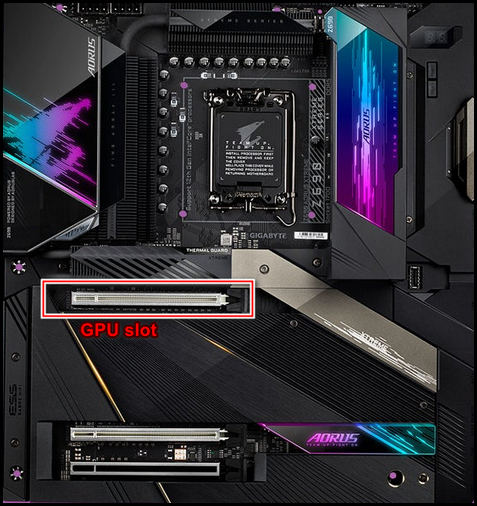
In order to function properly, the GPU must be properly inserted into the dedicated slot. To begin, open the lever on the right side of the GPU. Then, properly position the GPU in the slot and push it all the way in until the lever clicks back.
Check Connectors
After installing the GPU, you must connect the cables. The cable comes in two varieties. One is power cables from the power supply, and the other is to connect the display to your video card. And you need proper PSU cables to connect to the GPU.
Follow these steps to properly connect the power cables properly:
- Open up the back panel of the PC case.
- Find out the cables with 6 or 8 pins, and connect them to your PSU. Sometimes, you will find PCIe written in the cable head.
- Connect the other end to your graphics unit. Both ends have clips, and you need to push the pins all the way in.
- Close the back panel.
After connecting the PSU cables to your GPU, connect it to the monitor. Your GPU could support HDMI, VGA, DVI, or DisplayPort. Alternatively, the GPU may come with only two types of ports.
You must connect the appropriate cable to your monitor configuration. These cables can occasionally fail cause of faultiness, resulting in Windows not booting up. When the display cable fails, it may only affect the display.
PSU connectors, on the other hand, will undoubtedly prevent the PC from booting. And, hopefully, you’ve heard about those fancy expansion cables that improve the look and function. It’s not a bad idea to connect the GPU to the PSU with expansion cables.
Check Your PSU
A GPU requires a lot of power to function. As a result, while your previous power supply was adequate for the system, it will no longer function properly after you install a new graphics unit. If you already have an overpowered GPU, you will not be affected by the power issue.
Nevertheless, if the power supply is insufficient, your PC will not boot. The recommended wattage is listed in the GPU description on the website. And, you also need to have an idea about the PSU cables.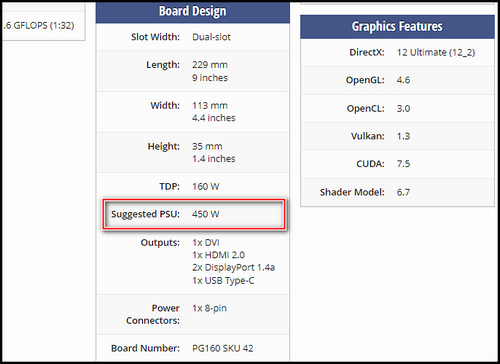
If the power supply output is less than what you require, upgrading the PSU will solve the problem. If not, proceed to the next step.
Update Your BIOS
When your motherboard is a little old, you should update the BIOS because your motherboard may not recognize the graphics unit.
Although it may appear simple, updating the BIOS or learning how to update the BIOS which you can even do with or without the CPU, requires the assistance of a professional. For your convenience, I’ll walk you through the process of updating the BIOS.
Follow these steps to Update the BIOS:
- Remove the GPU from the motherboard.
- Discover your motherboard’s number and model. You may find that on the manufacturer’s website or press Win + R, type msinfo32, and hit enter. You will find the proper info on your motherboard.
- Search for your motherboard model on the internet, and get into the official website.
- Locate a menu or page named Support, then download the latest version.
- Extract the Zip file and take it to a USB drive.
- Insert the USB drive and push the flash BIOS button if you have the option.
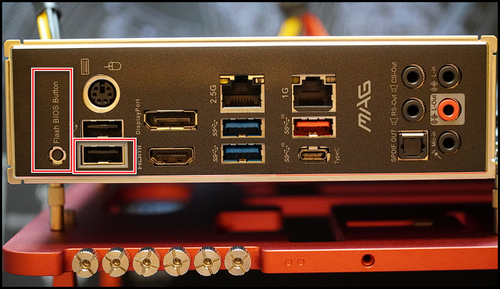
- Otherwise, restart your PC and get into the boot menu. Then find out the flash option.
- Choose the USB drive from the boot priority/order menu.
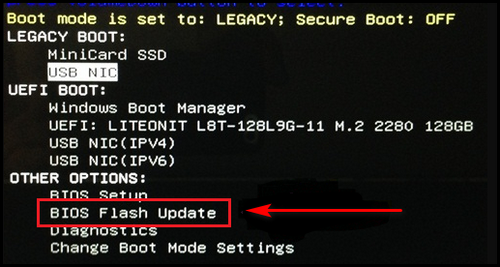
The system will automatically update after you choose the USB, which contains the updated file. If everything else is okay then updating BIOS will solve the issue. As well as BIOS updates can enhance your overall performance.
Check the GPU, it Maybe DOA
If none of the procedures I described in the beginning work, try the GPU in another system. This will assist you in properly isolating the problem.
If you discovered that installing the graphics card in another system caused the same problem as yours, the graphics card may be defective. You should contact your seller because the GPU could have Dead on Arrival (DOA).
Note: Never attempt to repair or open new cards. This will void your video card’s warranty.
Wrapping Up
Overall, it’s heartbreaking to encounter a problem with a newly acquired component. And the GPU is among the most expensive components.
If the GPU is not dead, the troubleshooting steps I discussed in the article will solve your problem. If all else fails, contact your seller and never attempt to repair or try to open a new GPU yourself. That will just cost you the GPUs warranty.

